
ALPINE WILL re-launch onto the global market after more than two decades, with its own sports car set to begin production in northern France by the end of next year.
However the head of the company, Bernard Ollivier, has rebutted rumours there will be both a RenaultSport version and an Alpine SUV - while not confirming whether a manual gearbox will be offered.
“I don’t answer this question, because I want to give a surprise on the car,” he told Wheels at the weekend’s 60th anniversary event for the Alpine brand, in its home town of Dieppe, France.
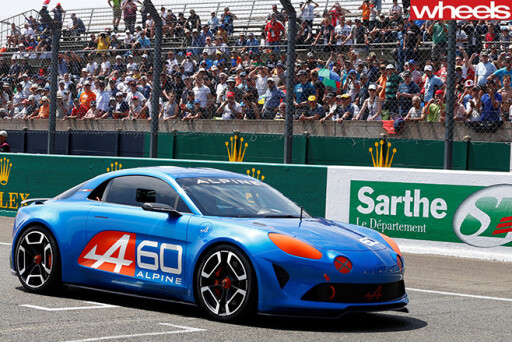 “Alpine is for the service of the driver, and the driver needs just what he needs, not more. So the car doesn’t need many tools that are comfortable or perhaps we don’t need and don’t use.”
“Alpine is for the service of the driver, and the driver needs just what he needs, not more. So the car doesn’t need many tools that are comfortable or perhaps we don’t need and don’t use.”
A dual-clutch transmission is a sure thing for the first Alpine produced in two decades, despite the fact that the new model – arising from a concept called the Alpine A120 that was raced at the 2015 Goodwood Festival of Speed – will be closely related to the Renault Clio.
In fact, Alpine intends to produce 3000-4000 cars annually in the same French factory that currently produces the Renault Clio RS.
The current Clio RS was the first performance model from the French maker to become dual-clutch and five-door only, after the all-new model was introduced in 2013. The savings in terms of manufacturing efficiency have helped Clio RS sales in Europe increase dramatically.
Watch rally legend Jean Ragnotti wrestle the Alpine A110 over the same stage as Damo.
And, while the current Megane RS is available as a three-door and with a manual gearbox, the unveiling of the new Megane at this week’s Frankfurt motor show has confirmed that it too will be five-door only. While yet-to-be-confirmed, it’s likely that the next Megane RS will follow suit and become dual-clutch only as well.
That leaves the Alpine with few choices in terms of manual drivetrains, with the Nissan-supplied 1.6-litre turbo used in the Clio tipped to be used in the new sports car, albeit heavily modified.
The last vehicle sold to the public with a clear Alpine imprimatur was the Renault Spider, manufactured between 1996 and ’99. That car was badged Renault instead of Alpine, due to Renault’s involvement in Formula One and its intention to leverage that effort.
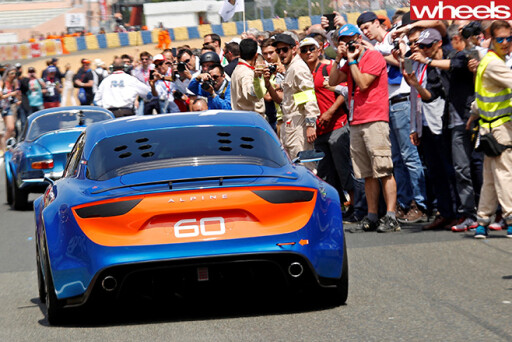 In the meantime, the Dieppe plant has been busy building RenaultSport vehicles. The Alpine brand lay dormant until 2012 when Renault partnered with Caterham, which made the business case for the return of the Alpine sports car stack up.
In the meantime, the Dieppe plant has been busy building RenaultSport vehicles. The Alpine brand lay dormant until 2012 when Renault partnered with Caterham, which made the business case for the return of the Alpine sports car stack up.
The decision to end the arrangement with Caterham in 2014 didn’t end the plan. Instead, it demonstrated to Renault the positive response and reverence for the Alpine brand, in effect galvanising the project.
Like the Spider, the new model will follow the tradition of low power and light weight. “For me [light weight] is a signature of Alpine; the weight as important as the performance, and with lightness you don’t need a very big and heavy engine and powertrain,” Ollivier said.
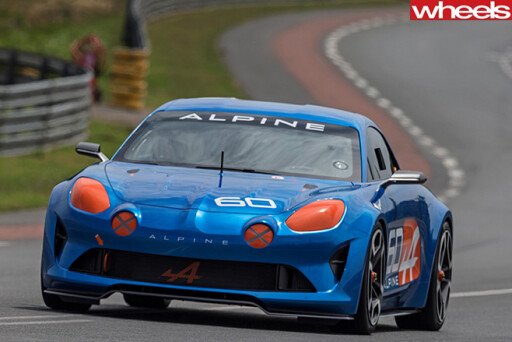 While that echoes the Colin Chapman ethos followed by Lotus, Ollivier’s approach to the Alpine brand rules out following the English sports car maker – and essentially all manufacturers apart from Ferrari – by producing an SUV.
While that echoes the Colin Chapman ethos followed by Lotus, Ollivier’s approach to the Alpine brand rules out following the English sports car maker – and essentially all manufacturers apart from Ferrari – by producing an SUV.
“To make an Alpine, we have to make all things adapted for an Alpine, and the DNA of Alpine is not the DNA of Renault,” he said.
“I was a creator of RenaultSport, but it’s not the same customer as a Clio RS. A Clio RS is quite heavy, with four seats. You can put your children to school; you can go on the weekend to the track. An Alpine is not that. An Alpine is a pleasure on a daily basis, but not to take your children to school; it’s a specific use pleasure. A beautiful car with big driving pleasure.”
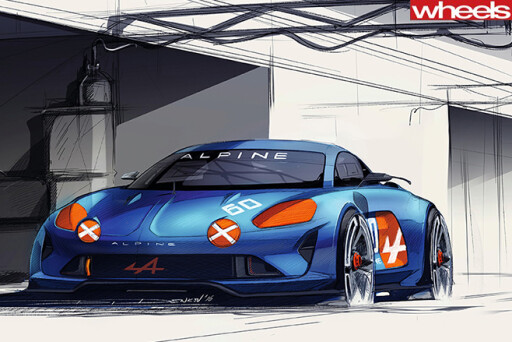 That means that there will not be a rumoured RenaultSport version of the Alpine. “An Alpine is different [to RenaultSport]; it is not the same DNA. A Renault is for the family. It’s difficult to imagine a family with four children in an Alpine.”
That means that there will not be a rumoured RenaultSport version of the Alpine. “An Alpine is different [to RenaultSport]; it is not the same DNA. A Renault is for the family. It’s difficult to imagine a family with four children in an Alpine.”
The styling of the A120 concept car is still not the final production car, said Ollivier, despite the fact that the sports car is less than 14 months away. Renault’s standard time between design sign-off and production is 30 months.
That also means that the price is far from certain, despite the description of the car as a ‘premium’ sports car. That suggests that it will cost more than the new Mazda MX-5 and the Toyota 86, but Ollivier would not confirm that it would be a Porsche rival, despite some media reports claiming that it will have an asking price similar to a Porsche Cayman, which starts at $106,200.
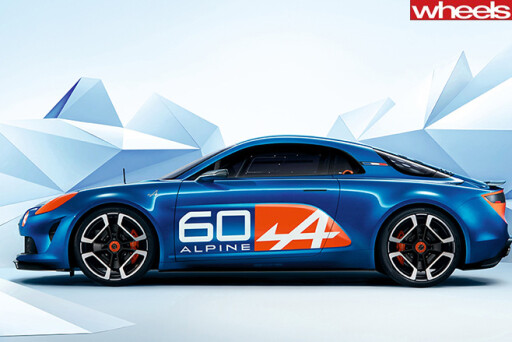 “Volume is not our objective,” said Ollivier. “An Alpine should be rare. We need volume for the profitability, and so people get the idea to buy the car … but not so many.”
“Volume is not our objective,” said Ollivier. “An Alpine should be rare. We need volume for the profitability, and so people get the idea to buy the car … but not so many.”
The car’s positioning is still to be set in stone, as relaunching Alpine brings several unknowns.
“After more than 20 years, it’s difficult to understand the value of the Alpine brand; how much the customer is ready to put in an Alpine car, against an Alfa Romeo car, a Porsche car, a Lotus car, a BMW etc. It’s very difficult,” Ollivier admitted. “Today we are working on that, because we cannot make a mistake – if our car is too expensive, it will be difficult, and if it is not enough it will also be difficult.”

COMMENTS